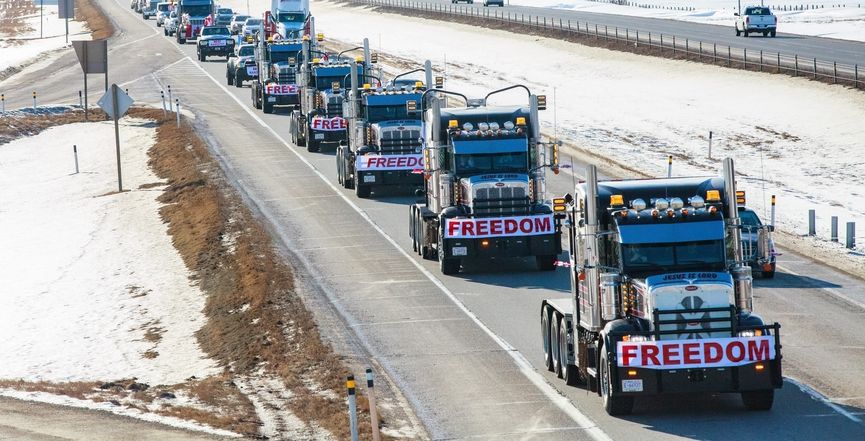The month-long occupation of Ottawa earlier this year that demanded the overthrow of the federal government and the removal of public health protections has largely faded from the news cycle, but first-hand witnesses, community organizers and experts agree that the long-term dangers represented by that movement have not gone away.
The occupation began as a so-called “freedom” convoy across Canada which had latched onto anger among a small minority of truck drivers about the ending of COVID-19 vaccine exemptions for cross-border workers, but more broadly represented opposition to public health protections and vaccination rules, along with generalized grievances about the federal government itself.
The lead organizers behind the convoy hailed from Canada’s far-right ecosystem, with some linked to Western separatist movements, Islamophobic messaging and racist conspiracy theories about a so-called “Anglo-Saxon replacement.”
The far-right People’s Party of Canada (PPC) loudly supported the convoy and the subsequent occupation of downtown Ottawa, as did many Conservative MPs, including leadership candidate Pierre Poilievre, who praised the “freedom-loving truckers.”
As we explored in a deep-dive last year into the factors behind the PPC’s increased vote share in the 2021 federal election, anti-vaccine and anti-public health rule messaging has found common cause with far-right groups during the pandemic.
Evan Balgord, executive director of the Canadian Anti-Hate Network, told The Maple that “COVID was like manna from heaven” for far-right movements in Canada.
“All these people on the far right, they're conspiratorial to begin with. They believe in conspiracies about (U.S. Democratic Party financier) George Soros; they believe in conspiracies about white replacement,” he explained in an interview back in September.
While not everyone in the COVID-19 conspiracy movement is necessarily a racist, said Balgord, they stand shoulder to shoulder with avowed neo-Nazis and people calling for violent insurrections against the government, meaning some otherwise ordinary people have inevitably become radicalized.
This was evident in the occupation, where signage and actions from some of the occupiers and their leaders included anti-trans, anti-immigrant, anti-semitic, Islamophobic, misogynistic and anti-Black sentiments.
